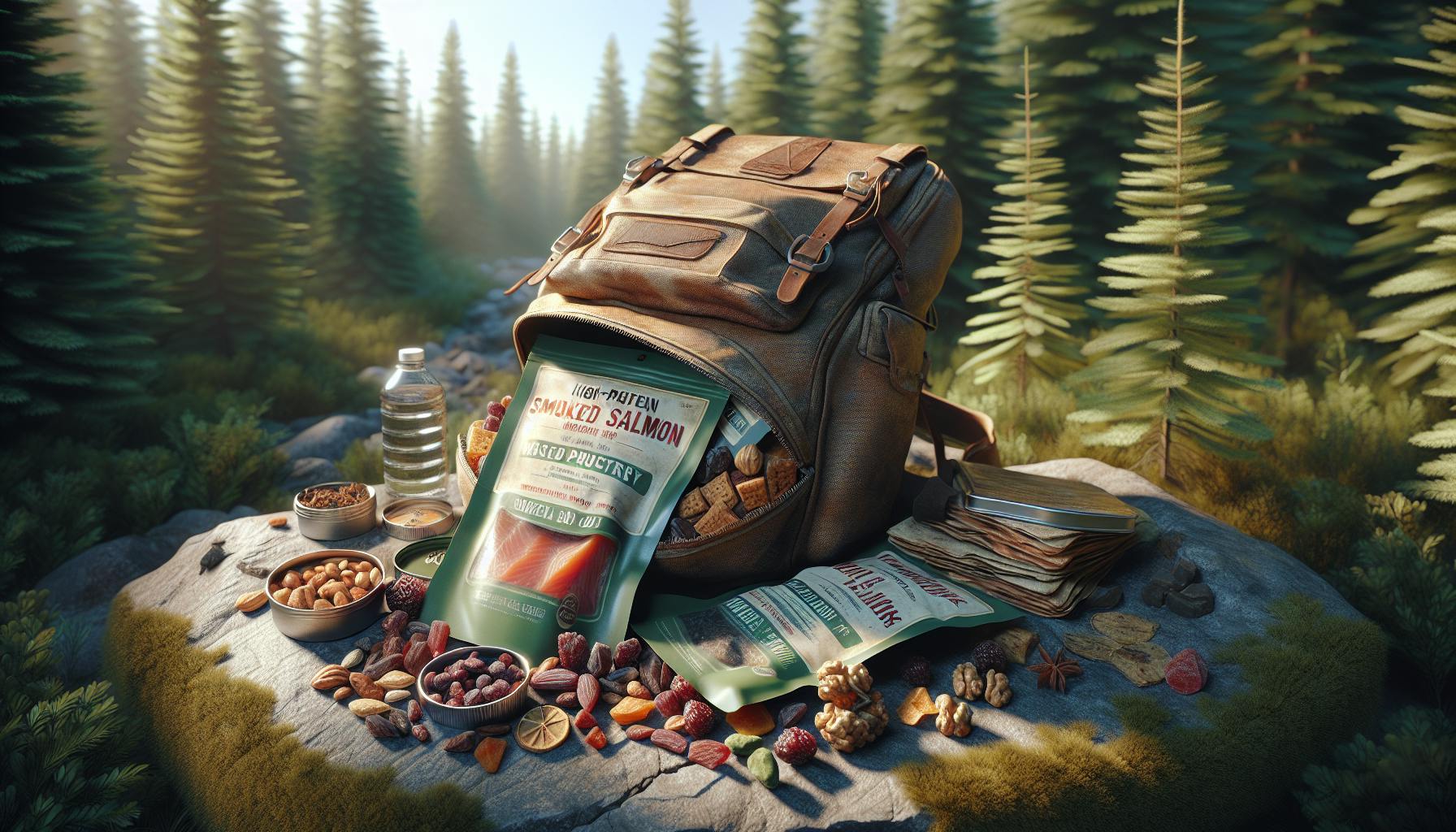When preparing for an outdoor excursion, most will agree that efficiently packing gear into a backpack is crucial, yet challenging.
Properly packing a Stealth Angel backpack utilizing effective weight distribution and item prioritization techniques can optimize utility and comfort during your adventure.
In this article, we will explore practical packing tips to maximize the storage capacity of your Stealth Angel backpack while balancing weight and access to essential gear.
Introduction to Stealth Angel Backpacks
Stealth Angel backpacks are designed for adventure and preparedness. Packing them efficiently is key to getting the most out of your gear. This article will provide tips on understanding Stealth Angel's unique features, determining what to pack based on your trip details, and maximizing every inch of space through strategic loading. Follow these packing pointers to keep your Stealth Angel organized, balanced, and ready to deploy at a moment's notice.
Understanding the Stealth Angel Advantage
Stealth Angel backpacks feature durable, weather-resistant materials and specialized compartments to keep your gear protected. Take advantage of the padded laptop sleeve, hidden CCW compartment, and extensive MOLLE webbing to securely organize equipment. The contoured shoulder straps and waist belt help distribute weight for comfort over long distances. Know your backpack's capacities and dimensions to optimize space.
Setting the Stage for Your Adventure
First, analyze your intended adventure's duration, locations, and potential hazards. If traveling through remote wilderness, prioritize shelter, navigation, food/water, and first aid. For urban environments, focus more on self-defense, cash, tools, and power banks. Gather what you'll need, then pare down to essentials. Roll clothing tightly and use compression sacks for sleeping bags.
Maximizing Every Inch
Use the main compartment for bulkier items, ensuring weight is balanced and centered on your spine. Distribute smaller gear in the front admin pocket and dual side pouches. Place items you'll need quickly in outside pockets. Fill in gaps efficiently with flexible items like socks. Compartmentalize like items together in packing cubes. Regularly reassess and adjust load distribution for comfort.
Is Stealth Angel an American company?
Stealth Angel is proud to be an American-owned and operated company. Our team of prepping enthusiasts sources high-quality survival gear from trusted domestic manufacturers.
As fellow preppers, we understand the importance of reliable equipment when an emergency strikes. That's why we hand-pick every item in our catalog for real-world usability. Our customers know they can count on Stealth Angel backpacks and accessories whether they need a bug-out bag for a weekend trip or a get-home bag for their commute.
Our American headquarters also enables us to provide best-in-class customer service. We make it a priority to listen to your needs and make sure you get the right gear for your situation. Don't hesitate to contact us if you ever have any questions about our packs or products.
As preppers, we know you value self-reliance and preparedness just as much as we do. We founded Stealth Angel to make quality survival equipment more accessible for families across America. We take pride in equipping our neighbors to handle life's uncertainties.
What is a survival backpack called?
A survival backpack is known by many names, including an emergency kit, go-bag-essentials-for-natural-disasters/">disaster bag, bug-out bag (BOB), 72-hour kit, GOOD bag (get out of Dodge), personal emergency relocation kit (PERK), go-bag, stealth angel backpacks, quick run bag (QRB), and more.
These backpacks are designed to contain the essential items a person would need to survive for 72 hours or longer during an emergency situation or evacuation. The exact contents can vary, but generally include food, water, first aid supplies, shelter, lighting, navigation tools, and other gear to meet basic needs for a few days.
The concept behind survival backpacks is to have your most critical supplies already packed and ready to go at a moment's notice. This allows you to quickly evacuate from a disaster scenario or getaway from an unsafe situation without wasting precious time gathering provisions.
Stealth angel backpacks aim to provide an optimal balance of utility, durability, weight distribution and space efficiency in a compact, wearable package. With thoughtful packing using the tips below, these bags can carry the right combination of gear to potentially save lives if the need should arise.
What do you put in a disaster bag?
When packing a Stealth Angel backpack for emergency preparedness, having the right supplies is critical. Here are some of the most important items to include:
Water and Food
Pack at least a 3-day supply of non-perishable food such as granola bars, dried fruits, and canned goods. Also include a gallon of water per person per day. Having enough food and water will help you survive until help arrives. Consider packing lightweight, high-calorie survival food bars as well to maximize nutrition.
Communication and Navigation
A hand crank or battery-powered radio and a whistle for signaling help are essentials. Pack extra batteries. A flashlight or headlamp will also be invaluable if electricity is out. Navigation items like a map, compass, and even a GPS device can also assist you.
First Aid Supplies
A comprehensive first aid kit includes bandages, gauze, ointments, medications, etc. Tailor your kit to your specific medical needs as well. Having the ability to treat injuries is vital when hospitals may be inaccessible.
Tools and Backup Charging
A multi-tool, pocket knife, duct tape, and fire starter kit equip you for minor repairs and survival situations. A backup charger for your phone ensures you have communication and documentation abilities. Prioritize these items in your pack.
Personal Items
Pack any essential prescription medications, hygiene items, copies of important documents, and a little cash in case electronic payments are unavailable. These personal items will bring comfort and peace of mind when facing uncertain conditions.
Carefully prioritizing and packing the most practical survival gear for your unique needs will empower you to handle emergency scenarios. Conduct an inventory check of your Stealth Angel bag periodically to ensure nothing has expired or needs replenishing.
sbb-itb-b932644
What do you need in a survival kit?
A well-stocked survival kit is essential for emergency preparedness. Here are some of the most important items to include:
Water
- At least 1 gallon of water per person per day
- Water filtration system or water purification tablets
Food
- High-calorie, non-perishable foods like protein bars, dried fruits, nuts, peanut butter, etc.
- Enough to last 3 days minimum
First Aid
- Adhesive bandages
- Gauze pads
- Antibiotic ointment
- Anti-diarrheal medication
- Pain relievers
Tools
- Matches in waterproof container
- Multi-tool knife
- Emergency blankets
- Flashlight with extra batteries
Other Essentials
- Extra prescription medications
- Cash in small denominations
- Battery bank to charge devices
- Whistle for signaling
Customize your survival kit based on your specific needs, but having these basics covered will help you safely endure an emergency situation. Prioritize water, shelter, first aid, food, and self-defense items first when packing your bag.
Mastering Weight Distribution in Stealth Angel Backpacks
Position heavier items closer to your back and lighter items towards the periphery of the pack.
Centralizing Heavy Items
When packing your Stealth Angel backpack, prioritize placing heavier gear like food, water, and shelter towards the back padding near your spine. This helps center the weight to avoid straining your shoulders and back. Consider items like:
- Canned goods
- Full water bottles or bladders
- Tents, tarps, or sleeping bags
Positioning the weight here provides stability and balance.
Peripheral Placement for Light Items
Conversely, pack lighter items along the edges and top of your bag. Goods like:
- Extra clothing
- Electronics
- Toiletries
Sit these peripherally since they won't unbalance you as easily. Taking weight off the extremities also creates a slimmer profile for maneuvering.
Balancing the Load
Distribute weight evenly for comfort. If you pack mostly heavy items on one side, the uneven weight distribution will quickly fatigue your body.
Aim for symmetry in packing items. If there's a first aid kit on the left side, balance it with a tool kit on the right. Keeping things balanced makes carrying easier.
Adjusting for Comfort and Stability
Fine-tune item placement if discomfort arises. If straps dig in or back pain emerges, try reorganizing gear or tightening straps.
Proper weight distribution combined with strap adjustments can optimize stability and comfort during travel. Experiment with pack content arrangements until discovering the best balance.
Item Prioritization in Packing
Organize items based on expected urgency of need and frequency of use when packing your Stealth Angel backpack. This helps ensure you have what you need, when you need it.
Accessibility of Essential Gear
Position your most essential gear for quick access. This includes:
- Navigation tools like map, compass, GPS device
- First aid supplies
- Flashlights and headlamps
- Fire starting kit
- Signaling devices like mirror or whistle
Having fast access to these critical items can make a difference in an emergency. Consider storing them in the sling backpack's external pockets or top compartment.
Compartmentalizing for Convenience
Take advantage of the Stealth Angel's multiple storage compartments to organize your gear by likely usage scenario. For example:
- Navigation and signaling equipment up top
- First aid and hygiene items in the middle pouch
- Food, water, and cooking gear in the lower compartment
This grouping by use case helps you swiftly grab what you need without unpacking everything.
Layering Your Load
When packing, position non-essential items like extra socks, rain jacket, or camp towel toward the bottom or periphery. Reserve the central and top areas for high priority gear you may require urgently.
The Last In, First Out Approach
Consider what you'll likely need to access first when on the move. Pack those high frequency items at the top of your backpack or in exterior pockets for rapid access without unpacking. This "Last In, First Out" approach ensures you can swiftly retrieve often used gear.
The Art of Reassessing and Adjusting Your Pack
After packing your Stealth Angel backpack, it's important to try it on and make any necessary adjustments for comfort and weight distribution. Here are some tips:
On-the-Go Weight Distribution Checks
- Walk around with your packed backpack to assess whether the weight feels properly balanced or if any discomfort areas emerge
- Make small adjustments as you go by shifting heavier items from the top to lower compartments or tightening straps for a more secure fit
- Getting the weight distribution right from the start helps avoid fatigue or strain during longer wear
Making Modifications for Improved Comfort
- Pay attention to any pressure points or rubbing that causes discomfort
- Reposition bulky or heavy items away from these areas to alleviate irritation
- Loosen shoulder straps if they dig in too tightly, or tighten if needed for more support
Evaluating Pack Performance
- Test out your backpack during different activities after packing it
- Assess how the contents shift during motion and make adjustments to keep things stable
- For example, tightly cinching the top compartment helps limit interior movement
The Importance of Regular Repacking
- Expect to repack and reassess your backpack contents every trip
- Rearranging items continually optimizes the weight distribution and comfort
- Repacking also allows you to account for changes in gear, weather, or outing needs
Taking a few minutes to check and tweak your packed Stealth Angel backpack makes all the difference in carrying comfort and ease of access when you need your gear. Don't settle for discomfort - a balanced, thoughtfully arranged pack lets you focus on the adventure ahead.
Conclusion: Optimizing Your Stealth Angel Packing Experience
When packing your Stealth Angel backpack, keep these key tips in mind:
Assess Your Needs
Take stock of what you'll realistically need on a regular basis. Consider daily essentials as well as emergency/survival items. This will help you determine the right pack size and optimize space.
Master Weight Distribution
Pack heavier items close to your back and lighter items away from your back. Distribute weight evenly so one area doesn't become too heavy. This will maximize comfort.
Strategic Item Prioritization
Pack high priority items that you use often or need quick access to towards the top or in outside pockets. Less vital items can go in the bottom or inner pockets. This allows for efficiency.
Make Regular Adjustments
Assess how you use your pack and make tweaks over time. Removing unnecessary items and shifting things around for better access/weight distribution leads to optimization.
Continually refining your packing strategy is key to getting the most out of your Stealth Angel backpack for your lifestyle.


